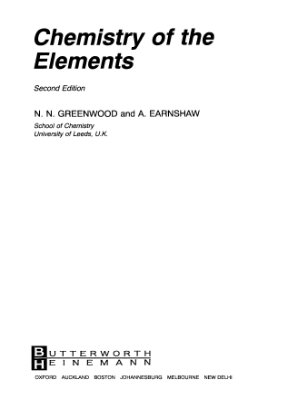2nd ed. - Oxford, Butterworth Heinemann, 1997 - 1343 c.
When this book first appeared in 1984 it rapidly established itself as one of the foremost textbooks and references on the subject. It was enthusiastically adopted by both students and teachers and has already been translated into several European and Asian languages. The novel features which it adopted were clearly much appreciated and we have been pressed for some time now to bring out a second edition. Accordingly we have completely revised and updated the text and have incorporated over 2000 new literature references to work which has appeared since the first edition was published. In addition, innumerable modifications and extensions incorporating recent advances have been made throughout the text and, indeed, no single page has been left unaltered. However, by judicious editing we have ensured that all the features which made the first edition so attractive to its readers have been retained.
We hope that this new edition of Chemistry of the Elements will continue to stimulate and inform its readers, and that they will experience something of the excitement and fascination which we ourselves feel for this burgeoning subject. We should also like to thank our many correspondents who have kept us informed of their work and the School of Chemistry in the University of Leeds for providing us with facilities.
N. N. Greenwood
A. Eashaw
August, 1997
When this book first appeared in 1984 it rapidly established itself as one of the foremost textbooks and references on the subject. It was enthusiastically adopted by both students and teachers and has already been translated into several European and Asian languages. The novel features which it adopted were clearly much appreciated and we have been pressed for some time now to bring out a second edition. Accordingly we have completely revised and updated the text and have incorporated over 2000 new literature references to work which has appeared since the first edition was published. In addition, innumerable modifications and extensions incorporating recent advances have been made throughout the text and, indeed, no single page has been left unaltered. However, by judicious editing we have ensured that all the features which made the first edition so attractive to its readers have been retained.
We hope that this new edition of Chemistry of the Elements will continue to stimulate and inform its readers, and that they will experience something of the excitement and fascination which we ourselves feel for this burgeoning subject. We should also like to thank our many correspondents who have kept us informed of their work and the School of Chemistry in the University of Leeds for providing us with facilities.
N. N. Greenwood
A. Eashaw
August, 1997

